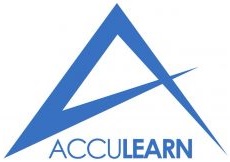Introduction
Appropriate material selection is the cornerstone of pressure equipment and piping design, operation and maintenance. The acceptability of materials is controlled by the relevant Codes. The mechanical integrity, safety, and cost-effective operation of plants depend on the in-service performance of the materials of construction throughout the plant life cycle.
This course provides comprehensive and practical understanding of engineering materials and guidance on the methods and best industry practices for the selection of the appropriate materials of construction for specific applications while simultaneously satisfying service requirements, construction Code requirements, and least life cycle costs over the entire plant life. This course will provide a practical overview of ASME BPVC Section II – Materials, as well as some relevant information from the BPVC Section VIII Div.1 and B31.3 Process Piping.
Course highlights are:
- Types and properties of engineering materials
- Selection and application of materials
- Degradation of materials in service
- Inspection strategies and Non-destructive examination
- Fitness for Service Assessments
Objectives
The key objectives of this course are as follows:
- Assist participants to clearly understand appropriate selection of materials of construction for pressure equipment
- Enable delegates understand how materials affect safe, reliable and cost-effective plant operation.
- Enhance participants’ awareness of key requirements of relevant design and operation standards and industry practices such as ASME B&PVC and B31.3; ASTM Material Specifications, API 571, 580, 581, 578 and 579, and others.
- Provide guidelines to participants to identify and locate in-service degradation and appropriate tools for condition assessment and making sound run/repair/replace decisions.
- Make participants recognize that although all flaws detected by inspection must be evaluated, not all flaws need to be repaired.
- The proper application of API Std 579-1/ASME FFS-1 for fitness-for-service assessment may obviate the need for some repairs and result in reduced maintenance cost and downtime.
Content
Day 1 – Engineering Materials – Types and Properties
Engineering Materials I – Overview
- Metals – Ferrous and non-ferrous
- Carbon steel
- Alloying elements added to iron base – carbon, manganese, and silicon
- Effect of alloying elements on end properties and on fabrication processes
- Impurities and their effect – sulfur, phosphorus
- Alloy steel
- Effects of alloying elements
- Stainless steels
- Specialty alloys
- Corrosion resistant alloys
- High temperature alloys
- Erosion resistant alloys
Engineering Materials II
- Refractory materials – Types and applications – Examples: Titanium and zirconium
- Clad Materials – Types; production methods; and typical applications
- Composite materials – Classes, types and applications
- Non-Metallic materials – Plastics, ceramics
- Surface engineered coatings/overlays – Types, specifications and applications
- Organic coatings
- Metallic coatings
- Corrosion resistant cladding
- Corrosion resistant / hard-surface welding
- Thermal spray coatings
- Plasma transferred arc (PTA) welded overlays
Metallurgy Basics
- The structure of metals and alloys
- Imperfections in metals and alloys
- Chemical composition – Unified numbering system (UNS)
- Physical properties – melting temperature, the thermal conductivity, electrical conductivity, the coefficient of thermal expansion, and density
- Mechanical properties – Base metals, filler metal and completed welds
- Tensile and yield strength, ductility, hardness and toughness
- Heat treatment and effect on material properties
Material Forming and Fabrication
- Forming and forging
- Casting
- Welding processes – main technologies and consumables currently used in industry
- Weldability – Carbon equivalent; Shaeffler and WRC diagrams
- Preheat and Post-Weld heat treatment (PWHT) – Code (B&PV and B31) rules
- Weld imperfections (discontinuities) commonly encountered with welding processes
Overview of ASME B&PVC Section IX ‘Welding and Brazing Qualifications’
- This Section contains rules relating to the qualification of welding and brazing procedures as required by other code sections for component manufacture
- Welding procedure specification (WPS)
- Procedure qualification record (PQR)
- Welder performance qualification (WPQ)
Day 2 – Materials Selection and Application
Material Selection Process and Guidelines
- Life cycle cost considerations
- Factors in material selection in petroleum refineries- type of refinery; type of crude oil processed; service conditions in specific process unit/application, expected service life
- Oxidation resistance – scale formation
- Guidelines on the maximum temperature of use of carbon steel and alloy materials
- Creep properties – The Larson-Miller parameter (LMP)
- Fatigue properties – Fatigue design (S-N) curves
Materials Standards and Codes
- ASME Boiler and Pressure Vessel and Piping Construction Codes
- Allowable stresses
- Constraints and limitations
- P-Number identificat
- ASTM – Some common material specifications for piping, plates, forgings and castings
Materials Standards and Codes (continued)
- API RP 941 – Steels for hydrogen service at elevated temperatures and pressures in petroleum refineries and petrochemical plants
- Oxidation resistance – scale formation
- NACE MR0103 ‘Materials Resistant to Sulfide Stress Cracking in Corrosive Petroleum Refining Environments’
- PIP (Process Industry Practices) Standards – Example: PIP Piping Material Specification 1CS2S01 Class 150, Carbon Steel, Socket Weld, 0.125 C.A. Process.
- Fatigue properties – Fatigue design (S-N) curves
- Overview of ASME B&PVC Section II ‘Materials Specifications’ – This Section compiles material specifications and material properties for materials used in the construction of ASME components. It contains four parts:
- Part A-Ferrous Material Specifications
- Part B-Nonferrous Material
- Part C-Specifications for Welding Rods
- Part D-Properties-(Customary)
Material Selection for Specific Equipment
- Refineries and petrochemical plants
- Power plants
- Pressure vessels
- Piping valves and fittings
- Pumps
Day 3 – Degradation of Materials In-Service
Material Ageing and Degradation – Overview
- Ageing is not about how old equipment is; it’s about knowledge of its condition, and how that is changing over time
- Indicators or symptoms of ageing
Failure Modes and Mechanisms in Materials
- Degradation processes – (e.g. corrosion, erosion)
- Excessive elastic deformation – (e.g. buckling)
- Fracture – (e.g. fatigue, brittle fracture)
Overview of API RP 571 Damage Mechanisms Affecting Fixed Equipment
- This document provides background information on damage that can occur to equipment in the refining and other process industries. It covers over 60 damage mechanisms. It is also an excellent reference for inspection, operations, and maintenance personnel.
Metallurgical Failure Analysis
- Overview
- Case study
Positive Material Identification
- Objectives and methodologies (e.g. X-Ray Fluorescence and Optical Emission Spectroscopy)
- ASTM- E1916
- Pipe Fabricator Institute PFI-ES42
- API 578
- MSS SP-137-2007
- Material Test Reports
Day 4 – Inspection Strategies and Non-Destructive Examination Methods
Mechanical (Structural) Integrity – Overview
- Definition, scope, and key elements – hardware and software issues, human factor, and asset manageme
- Potential threats to technical integrity in a hazardous environment
- Regulatory requirements – SH&E, OSHA, SEVESO II
- Life cycle implications – design/operation/maintenance, management of change
Inspection Strategies and Methods
- Real function of inspection
- Planning and strategies
Inspection Strategies and Methods (continued)
- Overview of API RP 580 and RBD 581 – Risk-Based Inspection
- Overview of API RP 577 Welding Inspection and Metallurgy
Non-Destructive Examination (NDE) Methods and Their Application
- Capability of the applicable inspection method vs. discontinuity
- New developments in NDE methods
Overview of ASME B&PVC Section V ‘Nondestructive Examination’
- This section contains requirements and methods for non-destructive examination referenced and required by other code sections.
Day 5 – Fitness-For-Service Evaluation
Introduction to Fracture Mechanics
- Overview
- Illustrative worked examples
Fitness-for-Service Assessment
- Overview of API Std. 579-1/ASME FFS-1
- Worked examples



